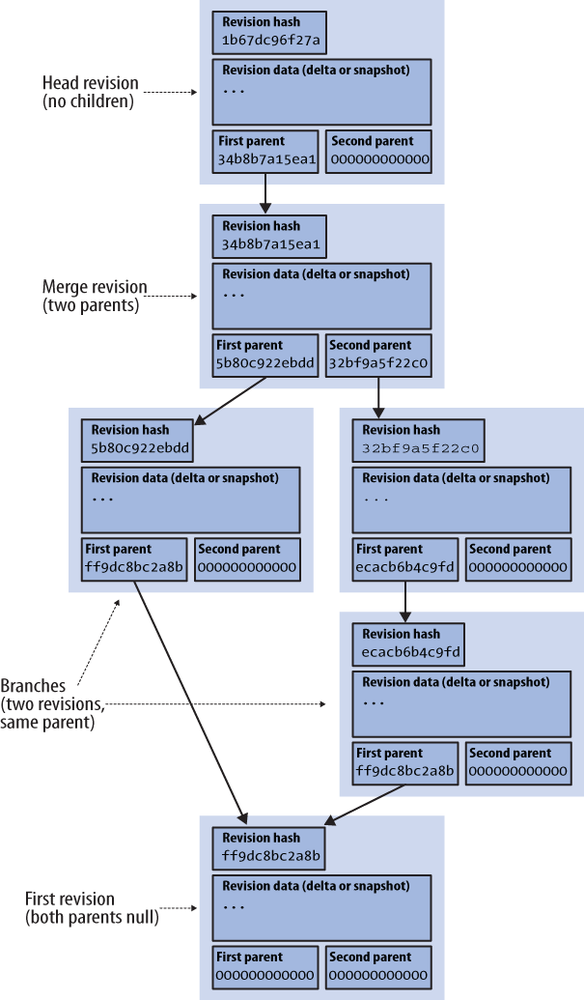Every entry in a Mercurial revlog knows the identity of its immediate ancestor revision, usually referred to as its parent. In fact, a revision contains room for not one parent, but two. Mercurial uses a special hash, called the null ID, to represent the idea “there is no parent here.” This hash is simply a string of zeros.
In Figure 4-4, you can see an example of the conceptual structure of a revlog. Filelogs, manifests, and changelogs all have this same structure; they differ only in the kind of data stored in each delta or snapshot.
The first revision in a revlog (at the bottom of the image) has the null ID in both of its parent slots. For a “normal” revision, its first parent slot contains the ID of its parent revision, and its second contains the null ID, indicating that the revision has only one real parent. Any two revisions that have the same parent ID are branches. A revision that represents a merge between branches has two normal revision IDs in its parent slots.
Get Mercurial: The Definitive Guide now with the O’Reilly learning platform.
O’Reilly members experience books, live events, courses curated by job role, and more from O’Reilly and nearly 200 top publishers.


